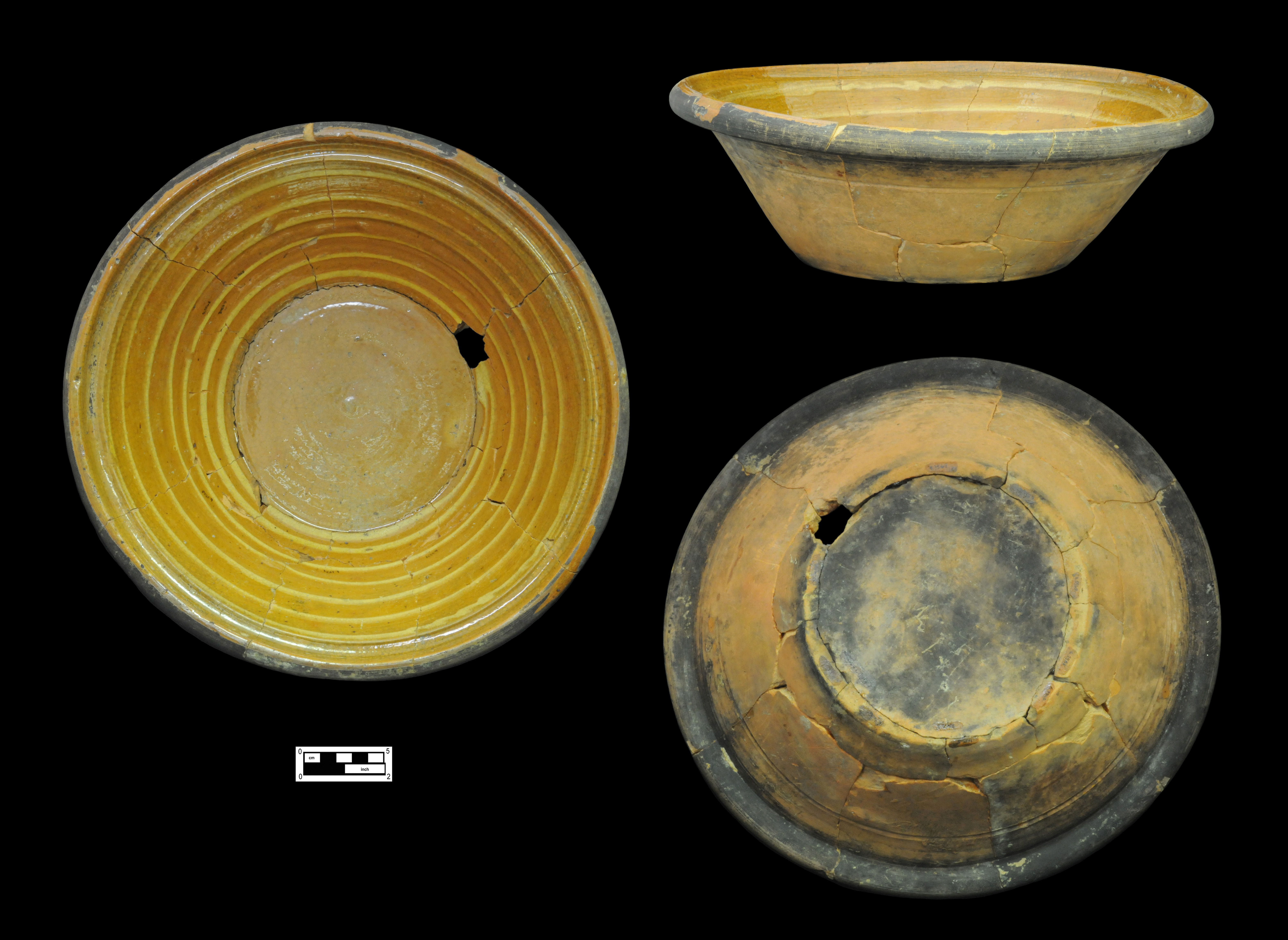March 2016 – Artifact of the Month
To Artifact of the Month Index
To PAF Home
~~~
Slip Decorated Pans and Indian Pudding in Early Philadelphia Kitchens

Slip-decorated red earthenware pans made by local potters were one of the mainstays of colonial and early 19th century kitchens. As multi-functional vessels, they could be used for mixing and cooking over the kitchen hearth or in bake ovens. The charring on the back of this pan, excavated from the Gunnar’s Run Site in the Fishtown neighborhood of Philadelphia, shows it served as a cooking vessel, and was probably used for baking puddings. The puddings made during the early years of this country were much different than the milk-based custards of contemporary desserts. Instead, early puddings were made of a combination of grains, spices, and other ingredients.
“Indian Pudding” was one of the most popular pudding variations in its day, and the recipe for making it, below, was taken from Eliza Leslie’s 1840 book, Directions for Cookery etc. Miss Leslie was a resident of Philadelphia and one of the most famous cooks of the 19th century.
Cut up a quarter of a pound of butter in a pint of molasses, and warm them together till the butter is melted. Boil a quart of milk; and while scalding hot, pour it slowly over a pint of sifted Indian [corn] meal, and stir in the molasses and butter. Cover it, and let it steep for an hour. Then take off the cover, and set the mixture to cool. When it is cold, beat six eggs, and stir them gradually into it; add a table-spoonful of mixed cinnamon and nutmeg; and the grated peel of a lemon. Stir the whole very hard; put it into a buttered dish, and bake it two hours. Serve it up hot, and eat it with wine sauce, or with butter and molasses.
This Artifact of the Month was contributed by Meta Janowitz, a Material Culture Specialist at AECOM.
by admin